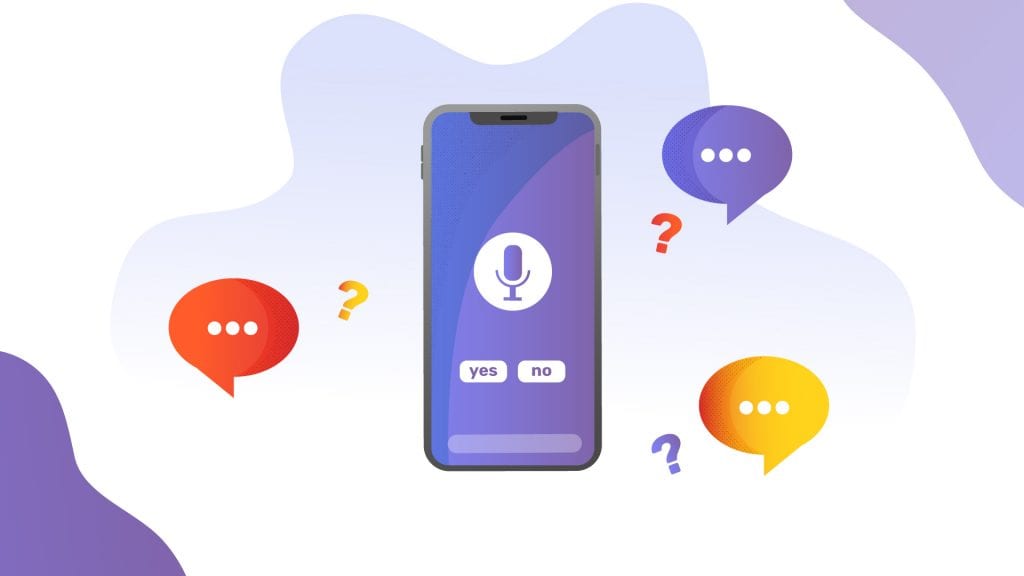How College Departments Can Increase Funding for Transcription Services
Transcription is one of the most valuable tools educators have at their disposal.

Transcription is one of the most valuable tools educators have at their disposal.
With transcription, a professor can give a lecture and then post the notes online without hours of manual work. It means more time to interact with students. Plus, transcripts from discussion groups or 1-on-1 tutoring sessions give all students—especially those who are deaf or hard of hearing—access to additional resources and course material.
Transcription is one of the most valuable tools educators have at their disposal.
It’s difficult to get boards to approve additional funding (if any) to transcribe and caption more content even though the benefits are clear.
Colleges spend millions of dollars a year, but only a small amount tends to go toward making academic content accessible to all students. You have to show your board how transcription and captioning can improve the learning environment, help boost enrollment, and improve your institution’s ROI in order to get funding.
1. Explain the benefits of transcription
Show how the cost of transcription and captioning services is dwarfed by the value and savings it offers in the long run. The cost of transcription is small in comparison to other college initiatives like academic programs, financial aid, and building projects.
There are three main benefits to funneling more funds towards transcription and caption services:
- They help prevent costly fines
- They unify workflows across departments
- They increase the college’s visibility for all prospective students
Let’s explore these benefits in more detail.
Benefit #1. Prevention of costly fines
Rev can help ensure that your school adheres to the requirements of the American with Disabilities Act (ADA) and avoid being fined tens of thousands of dollars for noncompliance. Schools like Harvard University and the Massachusetts Institute of Technology can attest to the fact that it costs less to transcribe and caption hours of video and audio content than it does to pay fines. Transcription and captioning aren’t optional, they’re required by the federal government.
Rev offers transcriptions and captions at only $1/minute each. So let’s say you want your school-tour videos captioned. If each video is fifteen minutes long, you’d pay just $15 to have each one transcribed and delivered in twelve hours. An hour-long lecture? That costs just $60.
By comparison, a first time ADA violation can cost your school $75,000. And subsequent violations could be up to $150,000.
In addition to low costs and fast turnaround times, Rev also offers the following:
- A 99% accuracy guarantee on transcriptions and captions
- No extra charges for transcribing content with more than one speaker or from speakers with accents
- Integrations that allow departments to create internal workflows
Transcription Zaps
- Create Rev transcription orders from new Dropbox files
- Save new Rev transcripts in Dropbox
- Create Rev transcription orders from new Google Drive files
- Save new Rev transcripts to Google Drive
Caption Zaps
- Place caption orders on Rev for new Dropbox files
- Add new Rev captions to Dropbox as files
- Add new Google Drive files to Rev as caption orders
- Add new Rev captions to Google Drive as files
Many Zapier connections are free to use and connect with popular, free tools.
Benefit #2. Unified internal workflow
Rev allows for a smooth workflow. For example, when students with disabilities attend classes at Portland Community College:
- Instructors receive a notice letting them know students with special needs are enrolled in their class
- The instructors submit all of the course materials they’d like to transcribe and caption
- Content is transcribed or captioned
- Accessible content is published to the course website
Notify the instructor once the Rev transcription or caption is complete. It’ll be the instructor’s responsibility to upload the video and transcript to their course website and let students know. Let the board know that this process can be used across different departments.
Benefit #3. Increased Visbility online
You can also use transcripts to benefit your SEO strategy. Include keywords in the audio of the video. Then, after you’ve had your videos transcribed, paste the transcription on the webpage. That transcript works in your favor on Google, making your school more likely to appear when prospective students search.
For example, let’s say deaf students want to learn more about specific programs. Strategically add related keywords throughout the video so that they appear in captions and the accompanying transcript. When students search online, these videos are more likely to appear at the top of search results pages because they’re easier for Google to find.
If people search for “college name + behavioral biology program” or “college name + computer engineering,” your captioned videos will appear. Video transcriptions and captions generate more exposure for the school and have the potential to boost enrollment.
What you can do: When presenting your case for why your department needs more transcription funding, lead with the cost benefits. We’ll review the benefits of transcription and captioning shortly, but the best approach is to combine the estimated annual cost — show the cost breakdown — and the long-term potential to enhance the student experience. It’s possible boards overlook allocating more funds to transcription and captioning because they don’t understand the positive impact. Explain that transcriptions and captions are less expensive than the cost of fines and the damage done to your school’s reputation if you’re fined.
Additional funding is also available through the U.S. Department of Education. The Office of Special Education and Rehabilitative Services offers grants to each state. For example, you can access Formula Grants — grants that don’t require an application — like Grants to States for Education of Children with Disabilities (CFDA 84.027). Available grants are set using a formula decided on by Congress. Funds from these grants are awarded as part of the Individuals with Disabilities Education Act (IDEA). As of 2017, $11.9 billion are available for distribution. Contact your State Education Agency (SEA) to learn more.
Associations like the National Association of the Deaf and the National Institute of Deafness and Other Communication Disorders (NIDCD) list additional funding and grant opportunities. These associations make it easy for colleges to find the grants that are most applicable to the needs of their unique student body and share application rules and details. Keep in mind that for any funding or grants you receive from federal assistance programs, you’re required to adhere to Section 504 of the Rehabilitation Act of 1973. Meaning all content must be made accessible to students with and without disabilities — for example, online video content must be captioned or transcribed. Non-compliance can lead to you forfeiting your funding.
2. Highlight the improved learning experience for students
Today, many colleges are focused on lowering barriers to accessing a quality education. Quality education is the ability for students to learn in an environment that’s inclusive and caters to their needs through available resources.
An average of nineteen percent of undergraduate students have a disability that prevents them from viewing or listening to data online like the rest of their classmates. Transcription and captioning are incredibly useful since they help create a more inclusive environment.
In addition, reasonable accommodation—modifications that allow students with disabilities to fully participate in their coursework—is a requirement set out by the U.S. Department of Education. Reasonable accommodation includes factors such as:
- placing reading materials, resources, class notes, and assignments online;
- allowing note-takers in classrooms;
- providing audio recordings of lectures and meetings; and
- captioning videos shared online.
As the number of college students with disabilities continues to grow, so do requests for reasonable accommodation. But transcription also benefits students without disabilities.
For example, when transcribed notes are available online, students can easily search for them. As a result, students can focus on the lecture and the in-class discussion vs. worrying about missing something important in their notes. If they miss class due to an illness or a medical emergency, the online notes become an even more important resource.
Sharing transcribed notes online also makes exam prep easier because students don’t have to rely solely on their own notes. Instead, students have access to comments professors made in class and answers to the questions classmates asked.
In 2017 1.1 million international students attended college in the United States. If this number remains consistent, new international students can also access transcribed documents that improve their English skills and translate portions to their native language for easy learning.
Transcription even benefits professors because it allows them to spend more time interacting with their students—either 1-on-1 or in small groups—instead of writing lecture notes to post online later. According to the Harvard Business Review, roughly 40% of students don’t complete their four-year program in six years, so a more hands-on approach by professors, and their teaching assistants, helps students who need a little more tutoring.
What you can do: One of the number one priorities of colleges is to ensure that their students have the best learning experience. When you share your request with your board, highlight this fact when discussing budgets. Millennials and Gen Zers are used to having information at their fingertips, so explain how transcription and captioning improves the student experience. Technology continues to evolve, which is an indication of the changing needs of the people who use it. Emphasize how access to advances in technology also caters to the various learning styles and needs of students in the 21st century.
3. Stress the increased appeal that accessibility generates
The months leading up to college applications are busy for students. They’re visiting campuses and researching programs and schools online. One of the factors new students consider when choosing their new school is the school’s commitment to technology. Students want access to the latest technology as a way to connect with their peers and support their academic experience. In particular, there’s been an increased demand for massive open online courses (MOOCs) that don’t require students to pay tuition or follow a strict curriculum. MOOCs are designed to cater to the individual needs of students and offer online certifications. Students who take MOOCs also help generate leads for colleges to showcase the quality of the education offered to full-time students.
When your board reviews the school’s budget every year, they’re focused on two things. How will spending make the school more affordable for students and more appealing to new students.
Nelson Carbonell, the chairman of the Board of Trustees for George Washington University explains, “[It’s] really about maintaining the quality and caliber of the institution, which means that we have to be competitive, for our students and faculty, in terms of pay and benefits and the kinds of facilities that they work in, the kind of support that they have.”
Online coursework allows students to complete coursework at their own pace using their own learning style. They aren’t forced to sit in lecture halls with a professor speaking for an hour. With online courses, students can explore and research new ideas that they find relevant to their programs.
Students want more content available online, as well as the tools that help them. A tool like Rev creates opportunities to share the following kinds of content online:
- Lecture notes
- Presentations
- Group meetings
- Dissertations
- 1-on-1 coaching sessions
- School board meetings
By making more course content available online, schools can offer certificates and bachelor’s and master’s degrees through online courses. Online content helps attract a wide range of students by opening schools up to more international, mature, and part-time students. As an example, a new study by the Educause Center for Analysis and Research found that community college students are “twice as likely as four-year students to prefer courses that are completely online.”
Schools can’t go wrong when they dedicate more resources to online learning, because online courses increase school revenue. Teresa Costantinidis, chief financial officer at the University of California, San Francisco, explains that by offering more online course options, students and colleges also save money since fewer resources are needed to administer online courses compared to in-class courses.
What you can do: Community colleges in California that offer distance education courses also have access to the Distance Education Captioning and Transcription grant (DECT). This funding is meant to help improve the access students with disabilities have to online courses. Learning materials and media, such as videos, can be captioned and transcribed for student convenience.
To promote your school’s use of transcription and captioning services, coordinate with the recruitment department to share information during online meet-and-greets, at college fairs and open houses, in printed marketing material, or through school tours—like this example at Yale.
Another option is to reach out to college alumni. Many alumni provide annual donations, so ask them to contribute to funding transcription and caption services. Also consider corporate partnerships and sponsorships. A portion of these contributions can be funneled into boosting your transcription and captioning efforts. All of these donations help position the school, alumni, and corporations as stewards committed to enriching the lives of current students.
4. Budget for Transcription services
The way colleges and universities spend their funds has been in place for years, and it’s worked for them. Every year new buildings are built and new programs are offered. Colleges receive an ROI that can be funneled back into the school to undertake even more construction projects and upgrades.
Show the board the value added to the college’s bottom line, the impact on public opinion, and the student experience. Reiterate that the cost of transcription and captioning is much lower than paying an ADA fine. The goal is to show colleges how to expand on what they’ve traditionally spent to keep up with students’ changing needs.
Finally, partner with a third-party service like Rev that can be incorporated into your existing workflow. Rev services and features are flexible enough to accommodate your changing workflow as student and faculty needs change.















